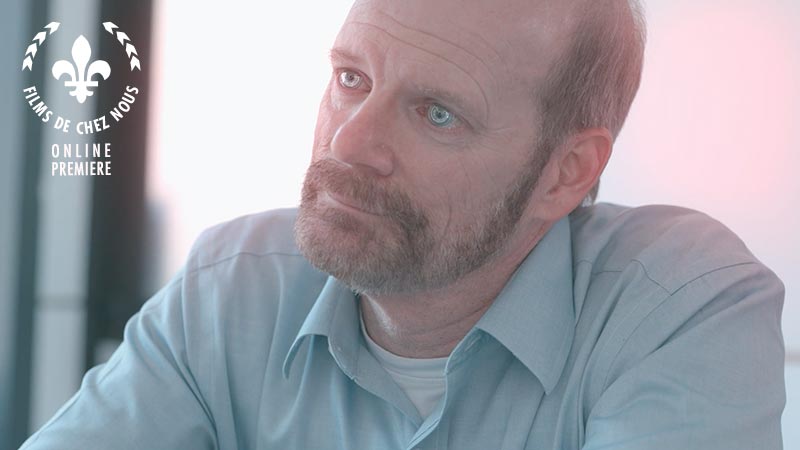A man goes on a quest across New York City at night: one that risks tearing his fantastical reality apart.

Can you tell us what inspired you to bring this story to life?
During Covid there came a point when I realized it had been over a year and a half since I had directed a short of my own, and seeing my peers continue to advance and make great projects inspired me to launch into something of my own. I wanted to make something different than what I’m used to: short narratives with dialogue and a classic 3-act structure. I knew I wanted to base an experimental film around a song, creating an almost elevated music video. I listened to the song “Enola Gay” by the band Orchestral Manoeuvres in the Dark, a band I had previously licensed music from and decided I wanted to go with it. When doing research into the background of the song and discovering what it was: an anti-war song about the atomic bombing of Hiroshima by the aircraft, Enola Gay, sung over a fun, synth-pop beat, I got a basis for a story. I knew it would be about a fun, fantasy-like world with deeper, truer complexities of the characters hidden below the surface. Enola Gay has also historically served as an anthem in the LGBTQ community, making it all the more appropriate of a track to play during the film.

The film holds a very strong visual design, who was behind the design what were they going for specifically?
I worked very closely with the cinematographer, production designer, costumer, and choreographer to create the visual design of the film. The visual design that we were all going for was centered around a theme of duality; we wanted the fantasy world and the real world to starkly contrast one another. The fantasy world was to feel very over the top, vibrant, playful, and a little too perfect. I informed everyone that the fantasy world should feel very convenient. I walked through different color schemes I wanted for different locations and the production designer, Kat, took it from there and ran with it. I was so pleased with the designs she came up with for those set pieces. We also decided to shoot those scenes using anamorphic lenses to mirror a retro 80’s style. The biggest difference was we shot all the fantasy scenes digitally, and the real world scenes on 16mm film. This was done with an intention of making the fantasy world seem a little faker and more pristine, while making the real world feel more grungy and humble.

What was the most challenging scene for you to film?
The most challenging scene to film was the opening dance number. The shooting day was super tight and we had a lot of specific coverage and specific moments we knew we wanted to fit in. It required everyone being on their A-game: the actors dancing, the DP, AC, grip team; we didn’t want to move on until we got the exact shot we needed. There were a lot of moving pieces and a lot of ambitious shots we wanted for that opening scene, and I found it very important since this scene had to do a lot in establishing the first tone the film deals with. Eventually we got it and I’m very happy with it.
What do you hope people will take away from ’These Games We Play’?
I hope the message people take away from this film is that complexities lie beneath the surface of all of us. What is being displayed on the outside can be drastically different than what a human is internally struggling with, whether it be relationship issues, questioning of sexuality, identity crisis’s, anxiety, imposter syndrome, etc. Ultimately, nothing good comes from living life as a facade, and I have learned that true freedom and happiness comes from self-acceptance.



